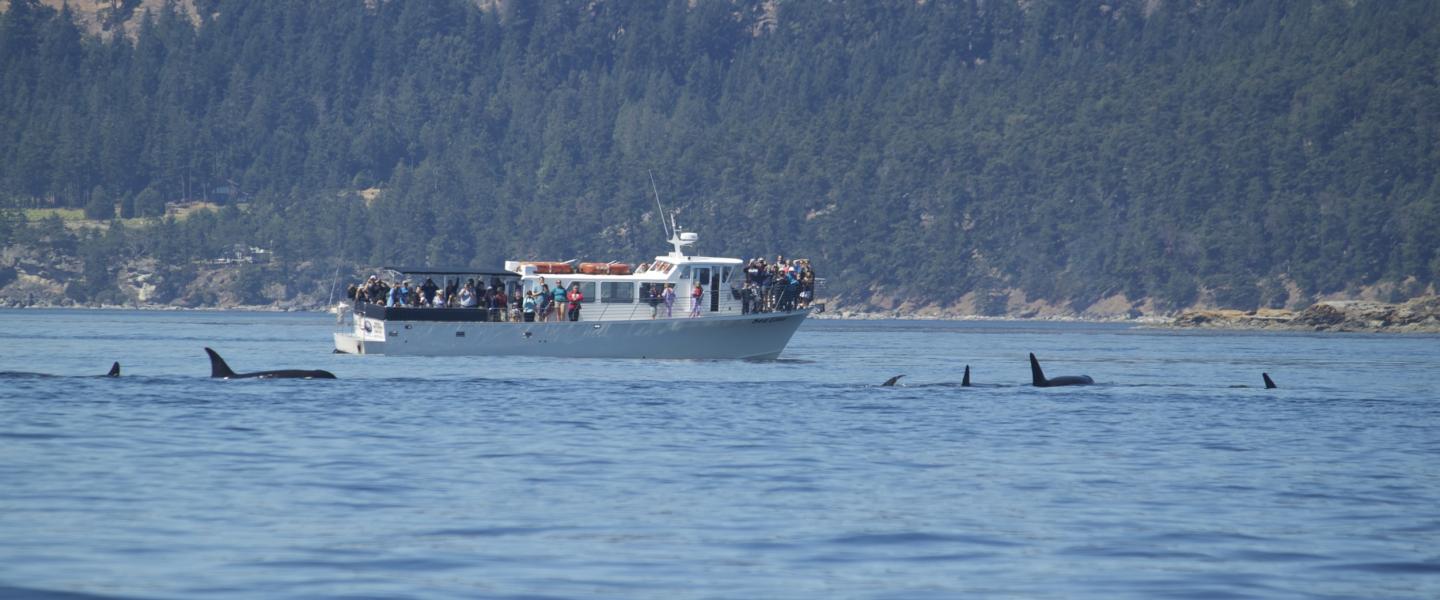
This Sunday in September sure felt like fall. Capt Gabe, Jordan, and myself headed out with a great group of passengers into the rainy blue Salish Sea. Most people visit this area in the summer, which is beautiful here. The temperature is usually super pleasant, the sun is up for a very long time, and there is usually not a rain cloud to speak of. The rest of the year though, it looks like it did today - very misty, cool, breezy, and rainy. We ventured off into the Pacific Northwest’s natural state and headed south through San Juan Channel.
We exited Cattle Pass and made our first stop at Whale Rocks. Here, we saw about 20 Steller Sea Lions. It is still a little early in the season for these giant sea lions, but as we quickly approach fall they will become more and more common. During the summer most are up north in breeding area in Alaska and B.C. While these giants ruled the top of the rock along the shore of the rocks you could see several Harbor Seals. These are the other common pinnipeds in these waters and they are quite a bit smaller. They stay here all year round and have to relinquish many of their haul out spots once the Stellers return since they are so much smaller.
Next, we headed west following the shoreline of San Juan Island. As we reached False Bay we started to see the first blows. It was J pod! The first orca we saw was J38 aka Cookie who was fishing by himself offshore. J38 is a sprouting male so his dorsal fin isn’t fully grown yet and is quite wobbly as he dove for his fish. J38 and the rest of J pod are part of the Southern Resident Killer Whales who are one of the two types of orcas we normally see here. The other type are called Bigg’s or Transients and one of the main differences between them is that SRKWs eat fish, mostly Chinook Salmon, while Bigg’s orcas eat marine mammals, mostly Harbor Seals. Another difference is that SRKWs, which consist of J, K, and L pods, are critically endangered with only 75 members left while the Bigg’s Orcas have perhaps ~200 individuals in the Salish Sea area and are increasing in number so it’s always special when we get to see the Southern Residents. Next we headed a little bit more offshore to see another group. First, Blackberry, J27, and Tsuchi, J31, passed us traveling south. We next on our other side saw the J16 matriline pass us also traveling south. The J16 matriline contain J50, Scarlet, who has received national attention lately as NOAA has attempted massive intervention strategies with medication darts and dropping caught Chinook Salmon in front of her. Time will tell if this is affective and if NOAA is actually interested in taking major steps under the Endangered Species Act to recover the SRKWs and not grasping at a publicity opportunity due to these orcas recent international spotlight.
We watched the J16s pass by and headed a little further out and caught up with the J17s. This group was also fishing and some of the younger ones were breaching and swimming upside down. It was amazing, as always, to see them so playful as they continued fishing and traveling south. After getting some amazing, once in a lifetime looks it was time to return home via Cattle Pass and San Juan Channel.
Whale folks, Until next time,
Naturalist Erick